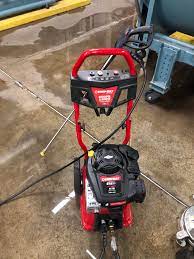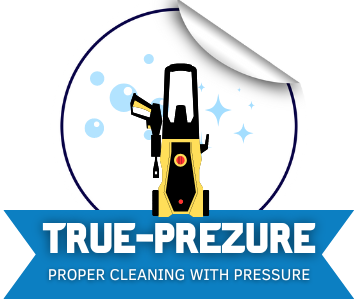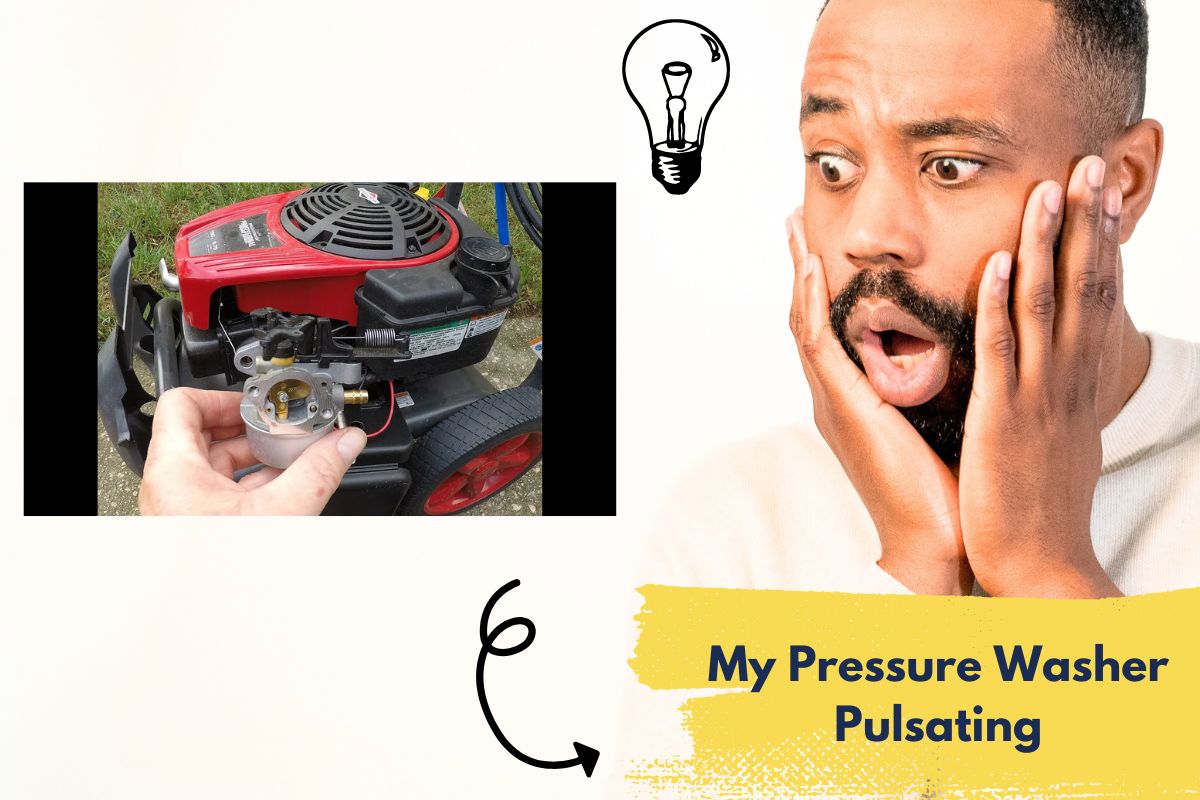Are you having trouble with your pressure washer pulsating?
Don’t worry, you’re not alone! Many people experience this frustrating problem when trying to clean their outdoor spaces. There are several reasons why a pressure washer may pulse or bounce while in use, and understanding these causes can help you fix the issue quickly.
In this blog post, we’ll explore the most common reasons for pulsation and provide tips on how to fix it. Keep reading to learn more about maintaining your pressure washer and getting the job done right!
Why Is My Pressure Washer Pulsating?
1. Spraying Nozzles
Spraying nozzles are an essential component of a pressure washer. They come in different sizes and shapes, each designed for specific cleaning tasks. Over time, spraying nozzles can become clogged with dirt or debris, leading to pulsation issues.
One common reason why your pressure washer is pulsating could be due to a blocked nozzle. If the spray pattern is irregular or weak, it’s recommended that you check the nozzle for blockages.
Another factor that might contribute to clogging is using water from unclean sources such as ponds or lakes without proper filtration. Contaminants like sand and leaves can get into the nozzle and cause blockage.
How to Choose Pressure Washer in 2023
It’s essential always to inspect your spraying nozzles before use and clean them regularly after every task. You can use a pin or small wire brush to remove any buildup inside the nozzle.
If cleaning doesn’t fix the problem, consider replacing damaged parts with new ones. In summary, ensure you pay attention when dealing with spraying nozzles since they play a significant role in determining how well your pressure washer functions.
2. The Unloader
The unloader valve is a crucial component in your pressure washer’s operation. It’s responsible for regulating the amount of pressure that builds up within the pump when you’re not spraying water. If it malfunctions, pulsations can occur.
When you pull the trigger on your pressure washer, water flows through the nozzle and out onto whatever surface you’re cleaning. The unloader valve diverts some of this flow back into the pump when you release the trigger, which prevents pressure from building up too much.

Best pressure washer for boats- explore here
If there’s an issue with your unloader valve, it may cause excessive pulsation while using your pressure washer or even prevent it from working altogether. A common problem is debris blocking either end of the valve or damage to its internal components.
Ensuring that your unloader valve is functioning correctly requires regular maintenance and inspection. Be sure to check for signs of wear or corrosion and clean any clogs regularly to avoid issues down-the-line.
3. Filter And Hose
The filter and hose of a pressure washer are two essential components that can cause pulsation if they become clogged or damaged. The filter is responsible for trapping debris and preventing it from entering the pump, while the hose carries water to the pump.
If the filter becomes clogged, it will restrict water flow to the pump, causing pulsation. To fix this issue, you need to remove and clean or replace the filter. It’s important to check your manual for specific instructions on how to do this correctly.
Similarly, a kinked or damaged hose can also decrease water flow and cause pulsation in your pressure washer. Make sure you inspect your hose regularly for any signs of damage such as cracks or leaks.
Top5 Small Portable Pressure Washer With Water Tank- Full Guide
It’s recommended that you replace your pressure washer hose every few years even if it appears to be in good condition because over time hoses can lose their flexibility making them less effective at delivering water at high pressures.
By regularly maintaining both your filter and hoses, you’ll help keep them working effectively which will prevent any unwanted pulsating during use.
4. Water Supply And Pump
The water supply and pump are crucial components of a pressure washer, and if they’re not working correctly, they can cause pulsation. The first thing to check when you notice a pulsing pressure washer is the water source. Make sure that your garden hose isn’t kinked or twisted and that there’s enough water flowing into the machine.
If you’ve ruled out any issues with the water supply, it’s time to take a closer look at the pump itself. A faulty pump can cause all sorts of problems with your pressure washer, including pulsation. One common issue is air getting trapped in the system. This happens when there’s low water pressure or an air leak somewhere in the system.
Another possible culprit could be debris clogging up either the inlet valve or outlet valve of your pump. If these valves become clogged with dirt or other materials, they won’t function properly, causing pulsation.
Make sure that your hoses are properly connected to both ends of your pressure washer as well as to any attachments like spray wands or nozzles. Any loose connections can disrupt proper flow through the machine and cause unwanted fluctuations in output pressure leading to pulsating behavior.
5. Valves
The valves in your pressure washer play a crucial role in the smooth operation of the machine. The inlet valve is responsible for drawing water from the source while controlling its flow rate. On the other hand, the outlet valve regulates and directs water to where it needs to go.
If these valves become clogged or damaged, they can cause pulsation in your pressure washer. A blocked inlet valve will not allow enough water through to maintain consistent pressure output, leading to an uneven flow that causes pulsation.
Similarly, if there is damage or wear and tear on either of these valves, then they may not be able to operate efficiently. This can lead to similar issues with flow rates causing pulsating.
Regular maintenance of your pressure washer’s valves is essential in preventing any problems before they happen. Cleaning them out periodically and replacing worn parts as needed should keep your machine running smoothly without any pulsation issues.
It’s imperative always to check on all components at least once every six months and ensure that you replace damaged parts whenever necessary – this includes regular inspections of your unit’s values!
How To Fix A Pressure Washer Pulsing (points)
If you are experiencing pulsations from your pressure washer, don’t worry! There are several things that can be done to fix the issue.
Firstly, check the spraying nozzles. These can become clogged with debris and cause a disruption in power. Clean or replace any blocked nozzles to ensure smooth water flow.
Secondly, inspect the unloader valve. If this is damaged or not functioning correctly, it will cause pulsation due to pressure fluctuations. Repair or replace it as necessary.
Thirdly, examine the filter and hose for any blockages that may restrict water flow, causing a pulsing effect.
What size pressure washer for 2 story house? Expert Guide!!
Next up is checking your water supply and pump for adequate pressure levels as well as ensuring there are no leaks throughout the system.
Valves within your pressure washer could also be at fault causing a pulse-like sensation when using it- so make sure they’re all working properly!
By following these steps on how to fix a pulsating pressure washer you should hopefully have resolved any issues and will be able to use your machine with ease again!
How To Maintain A Pressure Washer
Maintaining your pressure washer is crucial to prolonging its lifespan and ensuring it works efficiently every time you use it. Here are some simple steps to help maintain your machine:
Before using your pressure washer, always check the oil level, air filter, and fuel tank. Make sure there’s enough water supply, and that all hoses are properly connected.
After using the machine, make sure you disconnect all hoses and remove any remaining water from them. Drain the fuel tank if necessary and clean the unit thoroughly.
Check for any leaks or damages on hoses, nozzles or other parts of the machine regularly. If there’s any damage found during inspection replace those parts immediately.
Clean all filters as directed in user manual; dirt build-up can lead to poor performance over time.
Store your pressure washer in a cool dry place free from dust after cleaning it up properly
By following these simple maintenance tips, you can ensure that your pressure washer stays in top condition for years to come.
1. Before Using
Before using your pressure washer, there are a few things you should do to ensure that it operates smoothly and effectively. Firstly, check the oil level in the engine and top up if necessary. Without sufficient oil, your pressure washer may not function properly or could even be damaged.
Next, inspect all hoses for any damage or leaks. If you notice any issues with the hoses, replace them before using the machine to prevent further damage or injury.
In addition to this, make sure that all nozzles are securely attached and functioning correctly. Damaged or clogged nozzles can cause pulsating water flow that can lead to damaging surfaces instead of cleaning them.
Double-check that all connections between the pressure washer and water supply are tight and secure before turning on the machine. This will prevent leakage during operation which can lead to decreased performance or damage over time.
By taking these steps before each use of your pressure washer, you’ll help extend its lifespan while also ensuring optimal performance every time you need it!
2. After Using
After using your pressure washer, it’s important to give it a good clean and store it properly. Here are some tips on how to maintain your pressure washer after use.
Firstly, disconnect the hose from the machine and allow any remaining water to drain out completely. This will prevent any potential freezing or damage in colder temperatures.
Next, wipe down the exterior of the machine with a dry cloth. This will remove any dirt or debris that may have accumulated during use.
Check for any leaks or damages in hoses or connectors and replace them if necessary. It’s important to address these issues as soon as possible to avoid further damage to your equipment.
Store your pressure washer in a cool, dry place away from direct sunlight and moisture. Covering it with a protective cover can also extend its lifespan by preventing dust buildup.
By following these simple steps after each use, you can ensure that your pressure washer stays in top condition for years to come.
Conclusion
As we come to the end of this article, it’s important to remember that a pulsating pressure washer can be caused by a variety of factors. Whether it’s a problem with the spraying nozzles, unloader, filter and hose, water supply and pump, or valves – each issue requires its own unique solution.
By understanding how your pressure washer works and what parts may be causing the pulsation, you’ll be able to quickly diagnose and fix any problems that arise. And as always, preventative maintenance is key in keeping your pressure washer working properly.
Faq-
Why is my pressure washer bouncing?
One of the most common questions people have about pressure washers is why they bounce or vibrate when in use. The answer to this question can vary, but typically it’s due to a few different factors.
Firstly, if your pressure washer is bouncing or vibrating excessively, check the nozzle you’re using. A worn out or damaged nozzle can cause uneven water flow and lead to pulsation. Additionally, make sure there are no kinks in the hose that may be restricting water flow.
Another possible culprit could be an issue with the unloader valve. If it’s not functioning properly, excess pressure may build up and cause pulsating behavior.
Ensure that your pressure washer isn’t being overloaded by running for too long at too high of a pressure setting. This can put unnecessary stress on the pump and eventually lead to malfunctioning parts.
By addressing these potential issues one by one, you’ll be able to identify what’s causing your pressure washer to bounce and take steps towards correcting it so you get smooth operation every time!
Why does my pressure washer bog down when I squeeze the trigger?
If you’re experiencing a pressure washer that bogs down when you squeeze the trigger, it could be due to several reasons. The most common reason is clogged or dirty nozzles and filters. Another possibility is a faulty unloader valve or low engine oil levels.
To fix this issue, try cleaning the nozzles and filters, checking the unloader valve for any damage, and filling up your engine oil if necessary. If none of these solutions work, it’s best to seek professional help.
In summary, maintaining your pressure washer regularly can prevent pulsating and other issues from arising in the first place. However, if you do encounter pulsation or bogging down problems with your pressure washer, don’t panic! Follow our troubleshooting guide above to get your equipment working smoothly again in no time.

